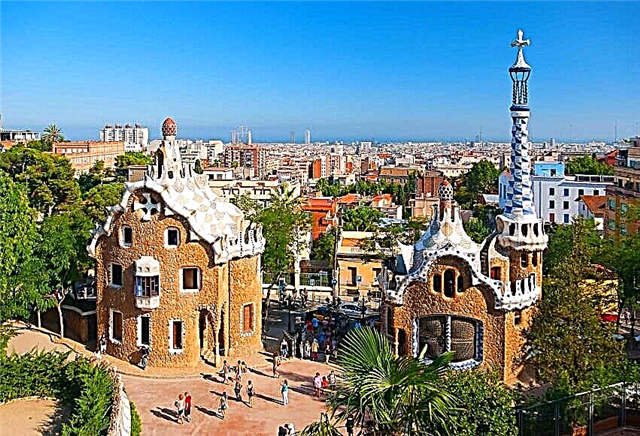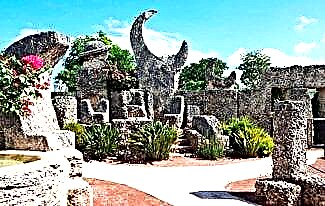The Ural Mountains, also called the "Stone Belt of the Urals", are represented by a mountain system surrounded by two plains (East European and West Siberian). These ranges serve as a natural barrier between the Asian and European territories, and are among the oldest mountains in the world. Their composition is represented by several parts - polar, southern, circumpolar, northern and middle.
Ural mountains: where are they
A feature of the geographical location of this system is considered to be the length from north to south. The hills adorn the continent of Eurasia, mainly covering two countries - Russia and Kazakhstan. Part of the massif is spread out in the Arkhangelsk, Sverdlovsk, Orenburg, Chelyabinsk regions, Perm Territory, Bashkortostan. The coordinates of the natural object - the mountains run parallel to the 60th meridian.
The length of this mountain range is more than 2500 km, and the absolute height of the main peak is 1895 m.The average height of the Urals mountains is 1300-1400 m.
The highest peaks of the array include:
The highest point is located on the border separating the Komi Republic and the territory of Yugra (Khanty-Mansiysk Autonomous Okrug).
The Ural mountains reach the shores belonging to the Arctic Ocean, then they hide under water for some distance, continue to Vaigach and the Novaya Zemlya archipelago. Thus, the massif stretches in the northern direction for another 800 km. The maximum width of the "Stone Belt" is about 200 km. In places it narrows to 50 km or more.
Origin story
Geologists argue that the Ural Mountains have a complex way of origin, as evidenced by the variety of rocks in their structure. The mountain ranges are associated with the era of the Hercynian folding (late Paleozoic), and their age reaches 600,000,000 years.
The system was formed by the collision of two huge plates. The beginning of these events was preceded by a rupture in the earth's crust, after the expansion of which the ocean was formed, which disappeared over time.
Researchers believe that the distant ancestors of the modern system have undergone significant changes over many millions of years. Today a stable situation prevails in the Ural Mountains, and there are no significant movements from the earth's crust. The last strong earthquake (with a power of about 7 points) occurred in 1914.
Nature and wealth of the "Stone Belt"
While staying in the Ural Mountains, you can admire the impressive views, visit various caves, swim in the lake water, experience adrenaline emotions going down the course of the seething rivers. It is convenient to get around here in any way - by private cars, buses or on foot.
The fauna of the "Stone Belt" is diverse. In places where spruce trees grow, it is represented by proteins that feed on the seeds of coniferous trees. After the arrival of winter, ginger animals feed on independently prepared supplies (mushrooms, pine nuts). Martens are found in abundance in mountain forests. These predators settle nearby with squirrels and periodically hunt for them.
We recommend looking at the Altai Mountains.
The ridges of the Ural Mountains are rich in furs. Unlike their dark Siberian counterparts, the Ural sables have a reddish color. Hunting for these animals is prohibited by law, which allows them to reproduce freely in mountain forests. In the Ural Mountains, there is enough space for wolves, elks, and bears to live. The mixed forest area is a favorite spot for roe deer. The plains are inhabited by foxes and hares.
The Ural Mountains hide a variety of minerals in the depths. The hills are fraught with asbestos, platinum and gold deposits. There are also deposits of gems, gold and malachite.
Climate characteristic
Most of the Ural mountain system covers a temperate zone. If in the summer season you move along the perimeter of the mountains from north to south, you can fix that temperature indicators begin to increase. In summer, the temperature fluctuates at + 10-12 degrees in the north and +20 in the south. In the winter season, the temperature indicators acquire a lower contrast. With the onset of January, northern thermometers show about -20 ° C, in the south - from -16 to -18 degrees.
The climate of the Urals is closely related to the air currents arriving from the Atlantic Ocean. Most of the precipitation (up to 800 mm during the year) permeates the western slopes. In the eastern part, such indicators decrease to 400-500 mm. In winter, this zone of the mountain system is under the influence of an anticyclone coming from Siberia. In the south, in autumn and winter, you should count on little cloudy and cold weather.
The fluctuations typical of the local climate are largely due to the mountainous relief. With increasing altitude, the weather becomes more severe, and temperature indicators vary significantly in different parts of the slopes.
Description of local attractions
The Ural Mountains can be proud of many attractions:
- Park "Deer Streams".
- Reserve "Rezhevskaya".
- Kungur cave.
- An ice fountain located in the Zyuratkul park.
- "Bazhovsky places".
Park "Deer Streams" located in the city of Nizhnie Sergi. Lovers of ancient history will be interested in the local rock Pisanitsa, dotted with drawings by ancient artists. Other prominent sites in this park are caves and the Great Gap. Here you can walk along special paths, visit observation decks, cross to the desired place by cable car.

Reserve "Rezhevskoy" attracts all connoisseurs of gems. This protected area contains deposits of precious and semi-precious stones. It is forbidden to walk here on your own - you can stay on the territory of the reserve only under the supervision of employees.
The territory of the reserve is crossed by the Rezh River. On its right bank is the Shaitan-stone. Many Uralians consider it magical, helping in solving various problems. That is why people constantly go to the stone, wanting to fulfill their dreams.
Length Kungur Ice Cave - about 6 kilometers, of which tourists can visit only a quarter. In it you can see numerous lakes, grottoes, stalactites and stalagmites. To enhance the visual effects, there is a special highlight here. The cave owes its name to the constant subzero temperature. To enjoy the local beauty, you need to have winter clothes with you.


Ice fountain from the national park "Zyuratkul", spread out in the area of Satka, Chelyabinsk region, arose due to the appearance of a geological well. It is worth looking at it exclusively in winter. In frosty weather, this underground fountain freezes and takes the form of a 14-meter icicle.

Park "Bazhovskie mesto" associates with the famous and beloved by many book "Malachite Box". This place has created full-fledged conditions for vacationers. You can go on an exciting walk on foot, by bicycle, or on horseback, while admiring the picturesque landscapes.
Anyone can cool off here in the lake waters or climb the Markov stone hill. In the summer season, numerous extreme lovers come to "Bazhovskie mesto" in order to descend along the mountain rivers. In winter, the park will be able to experience just as much adrenaline while riding a snowmobile.
Recreation centers in the Urals
All the necessary conditions have been created for visitors to the Ural Mountains. Recreation centers are located in places far from noisy civilization, in quiet corners of pristine nature, often on the shores of local lakes. Depending on your personal preference, you can stay here in complexes with a modern design or in semi-antique buildings. In any case, travelers will find comfort and polite, caring staff.
The bases provide rental of cross-country and downhill skis, kayaks, tubing, snowmobile rides with an experienced driver are available. On the territory of the guest zone there are traditionally barbecue areas, a Russian bath with billiards, children's playhouses and playgrounds. In such places, you can be guaranteed to forget about the bustle of the city, and fully relax on your own or with the whole family, taking an unforgettable memory photo.









